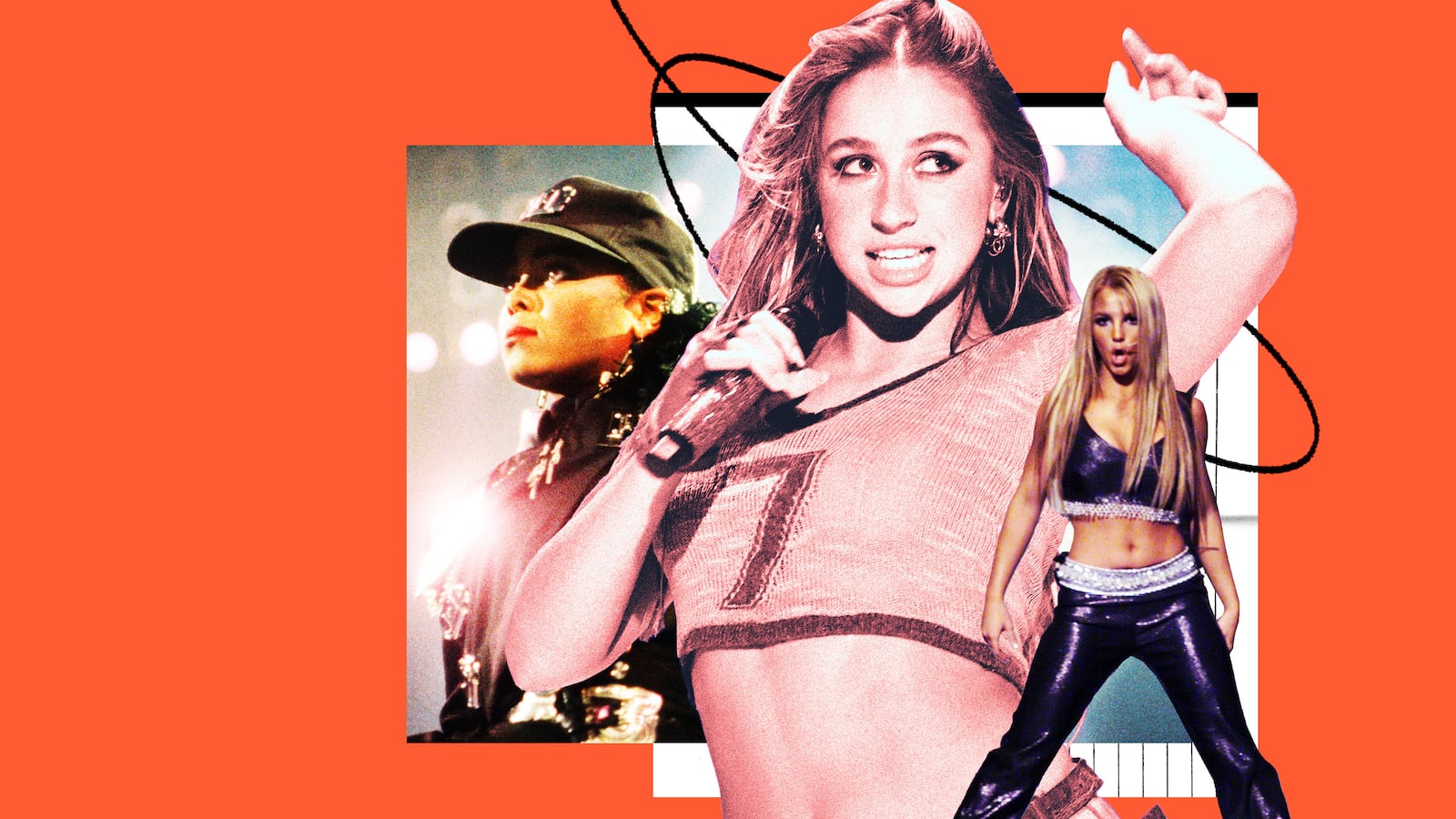Even if you haven’t listened to Tate McRae’s new album, it’s likely you’ve seen her dance. In her music videos, on Saturday Night Live, at the Billboard Music Awards—whenever she gets the chance, McRae’s going to bust a move. In fact, the marketing strategy behind the breakout pop star’s recently released sophomore album, Think Later, seems to be entirely centered around her dance pedigree, which includes becoming So You Think You Can Dance’s first Canadian finalist. The album’s lead single, “Greedy,” as well as its follow-up, “Exes,” were both released alongside choreography-heavy videos, and McRae, 20, has since been on a circuit of live and televised performances that flaunt her beyond-her-years confidence as a dancer. These performances have garnered plenty of attention online, leading her to become one of the most talked-about new pop artists of the year.
In a recent interview with Vogue, McRae suggested that this success speaks to a growing demand for dance-centric spectacle: “There are so many videos that I look back at and it’s really the full production—the singing, the dancing, the visuals. I think people miss that.”
She’s right. McRae’s success, and the discourse it has sparked, speaks to a glaring hole in the pop music landscape—specifically, new stars who can command a stage with their dance moves as confidently as they can with their music. Maybe it’s nostalgia for the ’90s and early-aughts, when we came to expect elite dance routines from our pop stars, thanks to the paths blazed by Madonna and Janet Jackson; maybe it’s an overexposure to contemporary choreo-averse megastars like Olivia Rodrigo and Taylor Swift; maybe it’s seeing post-conservatorship Britney Spears exuberantly dance her heart out on Instagram.
Whatever it is, people seem thirsty for pop music’s next generation-defining multi-hyphenate, and the question of who can fill this role has sparked plenty of debate. For better or worse, that debate is currently focused on Tate McRae.
Despite her viral success, it’s not at all clear that McRae is capable of carrying the torch previously held by artists like Madonna and Spears; Think Later is an album that highlights her skills as a dancer, in that it fails to underline any dexterity she may have as a singer or songwriter. In a recent profile with People magazine, she boasted that the cheeky send-off song “Exes” was written in just half an hour.
Unfortunately, this doesn’t so much make her seem prolific as it does explain why all the music on this album feels rushed and half-hearted. Lines like “change my mind up like it’s origami” underlie a tendency to go with the lyric that is most convenient rather than the one that actually works. These lyrics are sung with a lazy and nasal delivery, one that is often too meek to stand up to her physically demanding choreography. (This perhaps explains why so many of the viral clips from her live performances are mere dance-alongs.) Think Later fails to present McRae as a fully formed artist, and the dancing often seems like it’s there to distract you from that.
Adding to this disappointment is the fact that Think Later, with all its easy and forgettable trap-pop songs, feels like an artistic step backwards for McRae. Her debut studio album, 2022’s I Used to Think I Could Fly was more focused on bedroom pop, and while it by no means comes across as a statement from pop music’s next great singer/songwriter, it does feature exciting glimpses of a burgeoning talent who isn’t afraid to be rough around the edges. It’s hard not to listen to these two albums back to back and feel as though McRae’s aspirations to one day dance on a stadium stage resulted in a sophomore outing that is far less adventurous than what she once seemed capable of.
All of this seems to bolster the theory that McRae’s success has less to do with her artistry than with the current state of the dancing pop star. As it stands, the closest thing we have to a contemporary dancing pop idol is Beyoncé, an artist who has already been doing this for over two decades. Perhaps the excitement around McRae comes from a concern that there aren’t enough obvious successors who can pick up wherever Queen Bey chooses to leave off. Besides McRae, where are the dancing pop stars who have a legitimate claim to Bey’s throne?
One unexpected contender might be Dua Lipa. After releasing one of the biggest dance-pop albums of the past decade, 2020’s Grammy-winning Future Nostalgia, Lipa returned last month with “Houdini.” The driving, ’80s-inspired single was accompanied by a totally dance-centric music video, one that is clearly meant to serve as a response to critics who for years have lamented her effortful, meme-friendly dancing. Had luscious dance music not served as such a perfect home for Lipa’s sultry and robust alto, she may not have needed to be put through the ringer as a dancer. However, like McRae, Lipa’s dancing now feels like it’s there simply to complete a brand image, and while her moves are far better than when she first broke out with “New Rules” in 2017, she still doesn’t look nearly as free and natural as one would hope by now.
So McRae feels underbaked, and Lipa is still proving her dancing chops to the world. Yet the fact that pop music’s next dance icon has yet to be anointed isn’t because no one else has the ability—in fact, it may be because there are too many people crowding this space for one singular star to bubble up to the top. Choreo-loving R&B artists like Tinashe and Victoria Monet have won critical acclaim and institutional embrace, but have so far been unable or unwilling to break into superstardom; K-pop groups like NewJeans have found international success but have not caused nearly the same stir in the West that BTS did nearly a decade ago; and former Fifth Harmony member-turned-promising solo star Normani, well… where is Normani?
As many mid-tier pop stars as there are who can dance as well as they can sing, this mode of pop performance has recently struggled to compete on the charts with confessional songwriting, melodic hip-hop, and crossover country anthems. However, the excitement around McRae’s success, premature as it may be, is a sign that the tides are turning. 2024 could be the year that a pop star truly dances their way into our hearts. It just might not be Tate McRae.





